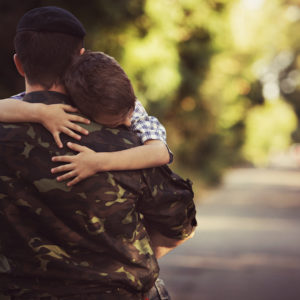In deciding what this country owes its veterans, it is important to keep in mind that for the last 50 years, the burden of defending this nation has not been shared equitably among the American population, as it was in World War II.
Beginning in the mid-1960s — when this nation still had a selective service system, or draft — and as the American involvement in the bloody war in Vietnam increased, many of the upper-class were able to use a variety of technically legal measures to avoid going to Vietnam. (For example, only one of the past five Americans who served as president and vice president and were of draft age during the war in Vietnam actually served: Vice President Al Gore. Presidents Bill Clinton, George W. Bush and Donald Trump, and Vice Presidents Richard Cheney and Joe Biden all had other priorities.)
As Sen. John McCain, R-Arizona, a genuine war hero who served more than five years as a prisoner of war in North Vietnam put it, “One aspect of the conflict, by the way, that I will never countenance, is that we drafted the lowest income level of Americans, and the highest level found a doctor that would say they had a bone spur. That is wrong. If we are going to ask every American to serve, every American should serve.”
Since 1973, this country has relied on an All Volunteer Force (AVF) to provide for our security. And the vast majority of the 1 percent who volunteered to serve do not come from the families of the Ivy Leaguers, Wall Street or affluent America. The Army now gets more soldiers from the state of Alabama, population 4.8 million, than it gets from the more than 25 million people who come from the cities of New York, Chicago and Los Angeles combined.
Moreover, as the wars in Vietnam and Iraq became less popular, the Army, the largest of the military services and the one that bore the brunt of the fighting, had to lower its standards. In the later stages of Vietnam, it took in 100,000 men who were unqualified, and from 2003 to 2007 it gave tens of thousands of what it called moral waivers, including for felony convictions to meet its recruiting goals. For example, the Army took in and deployed people like Bowe Bergdahl, even though he received an “uncharacteristic discharge” from of the Coast Guard over psychological concerns, and Chelsea Manning, even though she had flunked basic training.
In addition, after the creation of the AVF, the military had to increase the number of women in the armed forces dramatically. Today, women number nearly 15 percent of the force. However, according to retired Marine Kate Germano, about one-third of these women will be sexually assaulted during their time in the service. We owe these veterans all the care and compensation they need for the trauma they have suffered.
Given these facts, this country owes these women and men who volunteer to fight the global war on terror not simply a thank you for your service, or the provision of medical care for their injuries. What they need is the opportunity to catch up to those who not only had a head start because of their privileged position but had a couple of years to develop their civilian job skills while these volunteers were serving in harm’s way.
We did not do this for those who served in Vietnam but need to do it now. The skills that they developed in the military will more than enable them to master the demands of a job.
To provide adequate care for the veterans who go to war to defend us, we need to raise taxes on the rest of the public and begin increasing the capacity of the Department of Veterans Affairs as soon as we go to war, rather than play catch-up, as we did after the attacks of 9/11.

